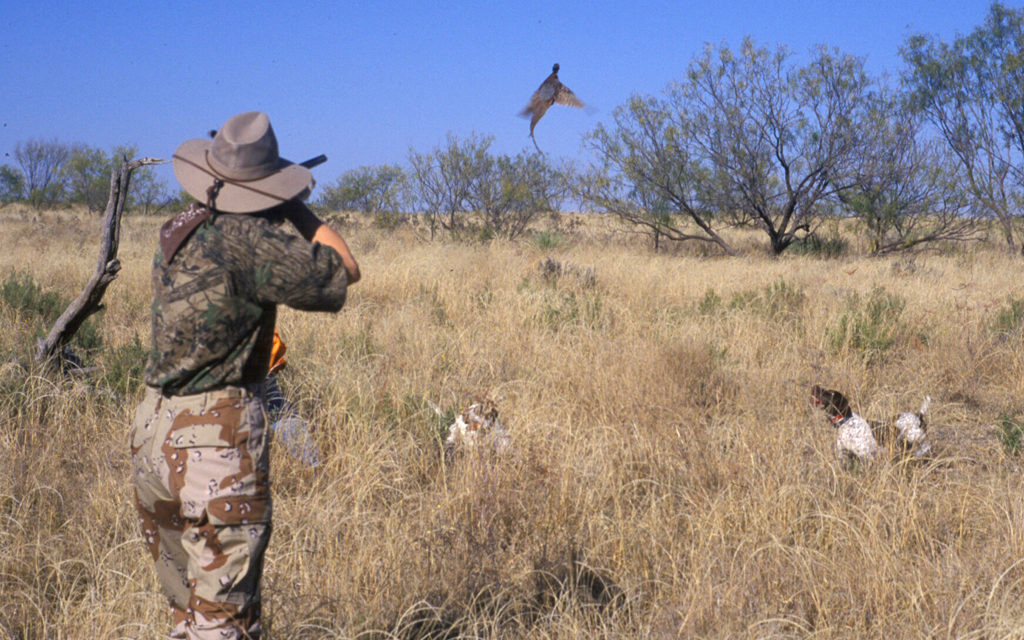A PANHANDLE PHEASANT RISES from thick cover after being flushed by dogs. (Photo by John Jefferson)
By John Jefferson
If you’ve never seen a pheasant in Texas or didn’t even know they exist here, you’re probably in the majority. Most wild pheasants keep to themselves in 34 counties in the Panhandle and the Rolling Plains.
But there are enough to be classified as a game bird, and there’s a hunting season for them. It’s going on right now and ends on December 31. It opened on December 2. The bag limit is three cock pheasants a day, and six in possession after opening day.
They don’t get a lot of publicity, and you don’t see them strapped to the fender of southbound pickup trucks or lying in the bed of one parked at a truck stop.
But they do try to beat a speeding vehicle now and then when crossing roadways. Every licensed driver in my family killed one before I ever got to shoot one. I hear they make quite a “SMACK” when they lose the race.
They weren’t native to Texas – or America. They were first imported into Oregon in 1881, but they got to Texas as fast as they could. Having short legs and no interest in flying long distances, they didn’t arrive here until the 1930s.
Some were reported on the Aransas National Wildlife Refuge in 1933, but most migrants came across the border from Oklahoma around 1939. By 1950, they were found in 17 Panhandle counties.
One intrigue about pheasant hunting is following dogs – yours, or ones belonging to someone else. It bridges the biological gap between man and dog. You’re both hunting, and relying upon each other.
Cliff Woerner, a friend living at Marshall Ford, is one of those who sees his dog as an indispensable partner in pheasant hunting. Cliff’s Chesapeake Bay retriever, Dixie, has reached retirement age in dog years.
Consequently, Cliff took a pass on hunting, this year. “I’d rather not hunt if I can’t hunt with my dog,” he told me, wistfully. I understand. Been there. It’s not the same.
Woerner has hunted the showy, fast-flying ringnecks in the best places in America: both Dakotas, Colorado, Nebraska and Kansas. “I prefer hunting in snow and watching my dog work birds in it,” he said. “Chessies have a double coat that keeps them warm better than Labs’ coats.”
Other popular pheasant hunting breeds include Boykin spaniels, Brittanies, English retrievers, and the pointers. Cliff says his next dog will be a Boykin since it will do everything a Chessie will do, but can live inside, since Boykins don’t shed.
When asked to compare Panhandle hunting with out-of-state hunting, he readily admits favoring the states that have abundant birds.
“The limits are the same, but you get in more shooting since there are more birds.” According to Robert Perez, TPWD’s upland bird program leader, the drought in 2012-2013 caused a population crash that Texas ringnecks haven’t yet fully recovered from.
There are still enough to hunt, though, and, to many Texans, the Panhandle beats driving to Nebraska in the winter.
JJ





